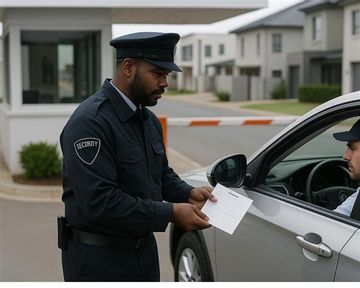The importance of entry and exit inspections in lease agreements
Often overlooked but still significant is the entry and exit inspection, which serves as a safeguard to prevent disputes and ensure the property’s condition is accurately recorded. These inspections, if done properly, protect both the tenant and landlord by providing a transparent record of the property's condition at the beginning and end of a tenancy.
Entry inspection: The first step
The entry inspection, as per Section 5(3) of the Rental Housing Act, is a key requirement that must be carried out when the tenant first moves in. This inspection involves the landlord and tenant jointly assessing the property to document any existing defects and to agree on its current condition. The primary purpose of this process is to avoid any potential disputes once the lease agreement expires or is canceled.
During the entry inspection, both parties should carefully examine the property to ensure any damages are noted. For example, if the paint on the walls is chipped or if there is a broken window, these details must be documented in writing. This helps ensure that the tenant is not held responsible for pre-existing damage at the end of their tenancy. Likewise, the landlord is protected by having proof of the property’s condition at the start, allowing them to hold the tenant accountable for any subsequent damage caused during the lease.
Agreeing on the state of the property’s interior and exterior during the entry inspection is essential. Both parties should sign off on the report, and each should keep a copy for their records. This provides a reference point to compare against the exit inspection, ensuring clarity about any changes that occur during the tenant's occupancy.
Exit inspection: Holding tenants accountable
The exit inspection is equally important and is governed by Section 5(3)(f) of the Rental Housing Act. This inspection must take place no later than the last day of the lease and should ideally be conducted three days before the tenant moves out. The purpose of the exit inspection is to compare the property’s condition to the report generated during the entry inspection.
The exit inspection allows the landlord to determine if the tenant is responsible for any damage that occurred during the lease period. If damage is found, the tenant may be required to repair it or cover the costs of the repairs through their security deposit. However, the tenant cannot be held accountable for normal wear and tear, such as minor scuff marks or slight fading of paint over time. These issues are expected and should not result in deductions from the deposit.
Using the deposit for repairs
One of the most common disputes between tenants and landlords revolves around the use of the deposit to cover repairs. According to the Rental Housing Act, the landlord is allowed to use the tenant’s deposit to fix any damage caused during the lease. However, this must be done transparently. The landlord is legally obligated to provide receipts for any repair work and allow the tenant to inspect these receipts. Failure to do so may result in the tenant taking legal action to recover the deducted amounts.
The deposit serves as a security measure, ensuring that landlords can restore their property to its original condition if tenants cause damage. For example, if a tenant accidentally breaks a window or causes damage to flooring, the landlord can use the deposit to cover the repair costs. However, the process must be fair and transparent, with detailed records provided to the tenant.
Comparing entry and exit inspections
To ensure fairness, the condition of the property recorded during the exit inspection must be compared to the condition documented in the entry inspection report. This comparison forms the basis for determining whether the tenant is responsible for any new damage. The Rental Housing Act emphasizes that both the tenant and landlord must agree on the final condition of the property by signing the inspection reports, and each must retain a copy.
The Role of rental agencies and property practitioners
Rental agencies and property practitioners are often involved in managing rental properties. According to the Property Practitioners Act (PPA), these agents have their own responsibilities when it comes to inspections. If an agent fails to conduct an entry or exit inspection, the property is assumed to have no defects. This can leave the property owner vulnerable to financial losses and potential legal disputes.
Additionally, property practitioners must ensure that the property owner signs a Mandatory Disclosure Form, detailing the condition of the property, which is then attached to the lease agreement. If this form is not attached, it is presumed that there are no defects, and the agent may be held liable if issues arise later.

